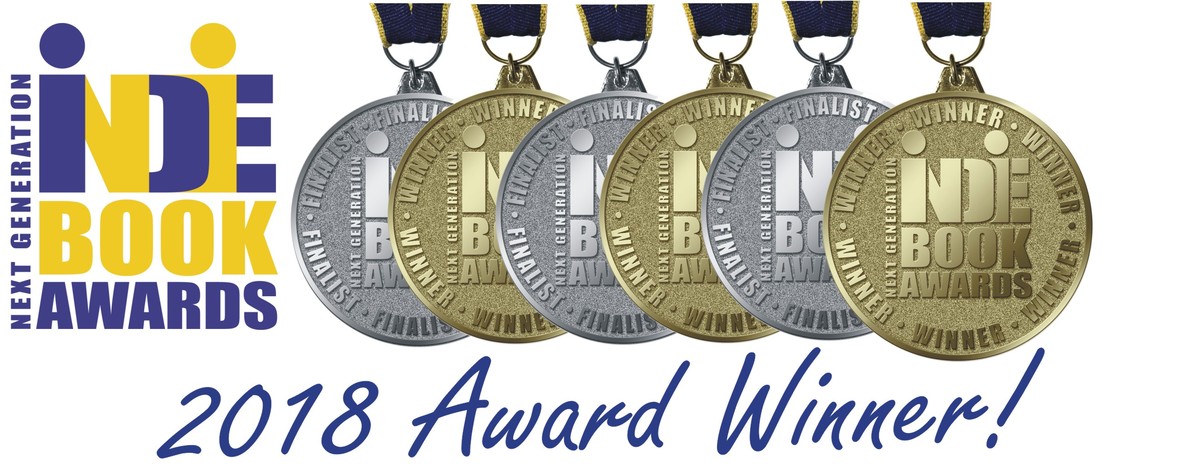The Warble
The Official Blog of Karen Ullo
Chilling Tales from Living Catholic Writers
Ask any group of reasonably well-read Catholics to name a living Catholic horror writer, and, since the death of William Peter Blatty early last year, the only one they can usually come up with is Dean Koontz. (I should know. I’ve made the experiment on multiple occasions.) But during the past decade or so, as we have seen a small but intentional movement toward the cultivation of Catholic fiction, a few brave authors have begun to delve into the darker side of the spiritual realm and still emerge with their faith unscathed, or even strengthened. If you’re looking for good stories to send shivers up your spine that will not leave you in the depths of atheistic despair, the authors below are worth checking out.
 Tim Powers is an acknowledged master of fantasy with dozens of novels and short story collections. His work has inspired spin-off video games and even the fourth Pirates of the Caribbean film. He’s also a practicing Catholic. At a talk he gave last year, which I attended, Powers said, “Any reader who goes looking for specifically Catholic fiction would be a bit at a loss with my books.” He went on to say, “What fantasy fiction does is to literalize metaphors… To un-literalize all of our stuff defeats the purpose of the genre… but of course, any story can serve both purposes.” In other words, you may have to do some metaphorical thinking to find the Catholic themes. Powers writes primarily “secret histories,” that is, history reimagined as if the real events had in fact been shaped by supernatural forces. Just skimming the list of his novels, you’ll see words like voodoo, zombies, psychic vampire, magic, werewolf… in other words, a little something for every creepy taste.
Tim Powers is an acknowledged master of fantasy with dozens of novels and short story collections. His work has inspired spin-off video games and even the fourth Pirates of the Caribbean film. He’s also a practicing Catholic. At a talk he gave last year, which I attended, Powers said, “Any reader who goes looking for specifically Catholic fiction would be a bit at a loss with my books.” He went on to say, “What fantasy fiction does is to literalize metaphors… To un-literalize all of our stuff defeats the purpose of the genre… but of course, any story can serve both purposes.” In other words, you may have to do some metaphorical thinking to find the Catholic themes. Powers writes primarily “secret histories,” that is, history reimagined as if the real events had in fact been shaped by supernatural forces. Just skimming the list of his novels, you’ll see words like voodoo, zombies, psychic vampire, magic, werewolf… in other words, a little something for every creepy taste.
 Eleanor Bourg Nicholson is one of our former editors at Dappled Things. Her novel, A Bloody Habit, was released by Ignatius Press this summer. My full review is forthcoming in our next issue, but suffice it to say, it’s Victorian skepticism and Dominican vampire slayers at their best. As Nicholson said in a recent interview with Catholic World Report, “If evil isn’t evil, and sin isn’t sin, and vampires aren’t vampires, the thrill of the Gothic is reduced to lame angst. I find angst very boring indeed.” There is nothing boring about A Bloody Habit, and I’ve heard rumors that she’s working on a sequel with werewolves!
Eleanor Bourg Nicholson is one of our former editors at Dappled Things. Her novel, A Bloody Habit, was released by Ignatius Press this summer. My full review is forthcoming in our next issue, but suffice it to say, it’s Victorian skepticism and Dominican vampire slayers at their best. As Nicholson said in a recent interview with Catholic World Report, “If evil isn’t evil, and sin isn’t sin, and vampires aren’t vampires, the thrill of the Gothic is reduced to lame angst. I find angst very boring indeed.” There is nothing boring about A Bloody Habit, and I’ve heard rumors that she’s working on a sequel with werewolves!
 Andrew Seddon is an author who comes highly recommended to me, but whose work I have not yet had a chance to explore. However, the brief glance I took at the samples available on Amazon convinced me that I need to move him up on my To Read list. Seddon is the only author featured here who has not written a vampire novel. (What can I say? Vampires drink blood to achieve immortality. It’s a trope that resonates with Catholic imaginations.) Instead, Seddon prefers good, old-fashioned ghost stories. He has two collections of spooky short stories, Tales from the Brackenwood Ghost Club (2017) and What Darkness Remains, just released last month. He also writes science fiction, historical fiction, and devotionals.
Andrew Seddon is an author who comes highly recommended to me, but whose work I have not yet had a chance to explore. However, the brief glance I took at the samples available on Amazon convinced me that I need to move him up on my To Read list. Seddon is the only author featured here who has not written a vampire novel. (What can I say? Vampires drink blood to achieve immortality. It’s a trope that resonates with Catholic imaginations.) Instead, Seddon prefers good, old-fashioned ghost stories. He has two collections of spooky short stories, Tales from the Brackenwood Ghost Club (2017) and What Darkness Remains, just released last month. He also writes science fiction, historical fiction, and devotionals.
Lastly, there’s me, which I mention because if you go looking for work in this tiny niche of Catholic-themed horror stories, my name will probably come up. My own contribution to the genre is my 2015 novel Jennifer the Damned, published by Wiseblood Books. It’s about an orphan vampire raised by nuns. Like Nicholson, I’m not a fan of modern quasi-vampires. Jennifer kills people. Things get messy. Metaphors are literalized.
If you know of Catholics or other Christians who are writing quality chilling tales, please share them with us in the comments! (I’m looking at you, Orthodox brothers and sisters. Vampires came from your neck of the woods.) The realm of the Gothic is fertile soil for the Christian imagination, but for a reader, it can be daunting to try to find the wheat hidden among the detritus of chaff. I hope this helps.
Happy haunting!
Karen Ullo is the author of two novels, Jennifer the Damned and Cinder Allia. She is also the managing editor of Dappled Things literary journal and a regular Meatless Friday chef for CatholicMom.com. She lives in Baton Rouge, LA with her husband and two young sons. Find out more at www.karenullo.com.
What Was In Lady Vivienne’s Poison

I almost never post the kinds of things fans seem to want from an author: short story spinoffs of novels, cut scenes, behind-the-novel glimpses into how a story evolved. I suppose it’s because I’m not a very good fan myself. I want to read a book (or watch a movie, etc.) and judge it on its own merits. I want it to be complete unto itself, to satisfy my appetite for story in its own right, and I don’t much care what else might be out there to supplement it, especially because the supplements are usually of lesser quality. I don’t begrudge anyone for being a fan. To find something you like and desire more of it is far more sensible than my approach. It’s just not an approach I know how to take.
Not surprisingly, I write the way I want to read: with an aim toward creating the most complete, satisfying work I can, which needs no supplementation. If I cut something, there was a reason, and it needs to remain cut. If I left out a piece of information, it’s likely I don’t know it any more than you do. You can ask me until the cows come home how Helen turned Jennifer into a vampire in Jennifer the Damned, and my answer will always be the same: Jennifer doesn’t know, therefore she never told me.
But I do know what was in Lady Vivienne’s poison in Cinder Allia, and I’ve decided it’s time to let my fans know, too.
If you haven’t read Cinder Allia, fair warning: there are spoilers ahead!
If you have read it, you know that much of the plot centers around the fact that the invading Darrivant army is using poison-tipped arrows that steal the Arman soldiers’ free will and turn them into mute slaves who must fight for the enemy cause—and it is Allia’s wicked stepmother, Lady Vivienne de Camesbry, who brews the poison. In the book, I never told you how she did it because there never seemed to be an appropriate moment when Vivienne—the only person who knows—would dare to mention it, even to herself. The secret is far too valuable.
Prince Raphael conducts experiments to try to distill the poison’s secrets. “He was certain the potion contained iron, granite, nightshade, and traces of some creature’s blood, but none of that information put him closer to understanding how it worked.” If he had only had a way to identify from which creature the blood had been procured, he would have found his answer.
It came from a fairy.
Lady Vivienne has never shrunk from murder. Exactly how she killed a fairy… I suppose that’s the stuff of the kind of spinoff I usually never write, isn’t it? Since I haven’t written it, I don’t know the answer. But I do know that she only had access to the blood of a single fairy, and therefore she could not have continued producing the potion forever. There was always a time limit on her decision to either defect to the Darrivants or to secure her place among the Armans by selling the secret of her potion… and, of course, blaming her stepdaughter for its existence.
The only magic in Cinder Allia is fairy magic. The fairies themselves only employ it for good, even if they are not always successful in achieving their aims. It takes a human with murder in her heart to appropriate such a pure gift for an evil purpose.
Karen Ullo is the author of two novels, Jennifer the Damned and Cinder Allia. She is also the managing editor of Dappled Things literary journal and a regular Meatless Friday chef for CatholicMom.com. She lives in Baton Rouge, LA with her husband and two young sons. Find out more at www.karenullo.com.
Reading Without Pictures

For the past eight years, my husband and I have been enveloped in the world of communication disorders because both of our children have difficulty comprehending language. However, it is only in recent weeks that a particular symptom was brought to the forefront as a factor in our children’s difficulties: they don’t visualize what they hear or read. Words don’t form pictures in their heads, or at least not very vividly.
When I heard this, I thought, So what? I don’t visualize words, either. I listen to them.
It shocked me to discover that the speech-language community views this as a symptom of poor language comprehension. I’ve scored at the top of every verbal aptitude test I’ve ever taken, earned a master’s degree in screenwriting, published two novels, and I have the privilege of being the managing editor of Dappled Things. I think it’s safe to say that my language comprehension is just fine. Nevertheless, I cannot deny that my children inherited this particular symptom from me.
I took an informal poll of some of the smartest people I know, and as I suspected, I am not alone. I don’t know how many of us are out there, but there is a small percentage of people who do not experience language through visualization, yet we are strong, avid readers. Our experience of story is just as vibrant and affecting as the imagined movies that most strong readers report seeing in their heads. However, we experience this sensory immersion primarily through sound. For the sake of posterity, or curiosity, or just because I’m still trying to figure out what, if anything, all this means, I’ve decided to try to articulate to the visual-dominant world what it’s like to be an aural-dominant reader.
I do not have aphantasia, or “mind’s eye blindness,” a condition in which someone is unable to form any mental visualizations. I can bring to mind pictures of things I have actually seen as well as the next person. I can close my eyes and still “see” the computer on which I am typing this, complete with all the clutter on the desk around it. The breakdown for me enters with language: words do not usually translate into pictures. If you say, “cat,” I can picture a cat if I want to, but the word itself does not trigger the image. “Cat” to me is a symbolic representation of an abstract idea, much like a number.
What do you picture if you see
1 + 1 = 2?
Do you picture one apple, or one person, or one piano, which then has another apple or person or piano added to it? Or do you understand that there is an abstract concept corresponding to the symbol 1 that your brain can access without the need for concrete imagery? If the latter, then you can understand my response to “cat.” I access it as an abstract concept, not an image.
But words do not only exist as single entities; the genius of human language is our ability to combine these abstract symbols into infinite permutations of sentences, paragraphs, and longer works that convey everything from tax codes to the divinely-inspired Word of God. Understanding the one-to-one symbolic equivalence of
cat = a four-legged furry creature that says “meow”
is called decoding, and it is only the first step to comprehension. There are other technical skills, such as fluency and sight-word recognition, that must be learned to facilitate reading, but I want to focus on the more mysterious skill that allows a reader to feel transported by a book, especially a work of fiction. This skill allows us to experience life through the characters’ “eyes” and be fully absorbed into the world of a story. It is usually called visualization, but I would like to propose a less sensory-specific term: immersion. To become immersed in a story is to experience it at the deepest level of the imagination. But despite the visual roots of the word “imagination” and the lack of an aural-equivalent English word, this immersion does not necessarily have to happen through pictures.
The ultimate goal of fiction—the true benefit of immersion—is empathy. Countless authors, readers, and critics have emphasized this across centuries:
“The only effect I ardently long to produce by my writings, is that those who read them should be better able to imagine and to feel the pains and the joys of those who differ from them in everything but the broad fact of being struggling, erring human creatures.” – George Eliot
“That is part of the beauty of all literature. You discover that your longings are universal longings, that you’re not lonely and isolated from anyone. You belong.” – F. Scott Fitzgerald
“We all suffer alone in the real world. True empathy’s impossible. But if a piece of fiction can allow us imaginatively to identify with a character’s pain, we might then also more easily conceive of others identifying with their own. This is nourishing, redemptive; we become less alone inside. It might just be that simple.” – David Foster Wallace
The goal, then, is not to see what the character sees, or to experience the majesty of an unfamiliar time period, country, planet, etc., although these can certainly be part of the pleasure of reading. The true goal of immersion is to feel what the characters feel and to find in them some glimmer of one’s own self. For an aural-dominant reader—or at least for me—this experience of empathy is very similar to finding an emotional connection to a piece of music. The imagined sounds of the words, combined with my abstract knowledge of their meaning, create a soundscape through which I experience all the highs and lows of human drama. I hear the text as if a world-class voice actor were reading every word, highlighting rhythms and cadences, a symphony of elongated vowels and clipped consonants that sweep me along at the exact tempo of the action. The literal meaning is important; without 1+1, I cannot reach the conclusion, 2. The concepts behind the words provide the structure, but the emotion is built into the sound. The way I felt after reading The Book Thief was very similar to the way I felt after hearing a live performance of the Shostakovich tenth symphony. Both were exhausting in the most glorious way, as if my soul had run a marathon using my ears as propulsion.
Immersion is not possible for me if the language does not have cadence, rhythm, and tone. I cannot become immersed in clunky prose no matter how glorious the story it attempts to convey. I also cannot become immersed in language with too many minute visual details. Much of what visual people call “description,” I call “breaking up the flow.” Perhaps it is my screenwriting background more than my aural dominance, but INT. JOE’S APARTMENT — DAY is adequate scene-setting for me. Any details an author chooses to include must reveal the tone of the story or the characters’ interior lives, or else reading them is like listening to the same boring I-IV-V-I chord progression over and over again.
I do sometimes create pictures in my mind when I read, but doing so requires conscious effort, and I use the strategy only as a last resort. If I stop to visualize, it means I’m confused. The language has become too focused on pictures for my aural/ abstract processing to handle. I can build images in my mind’s eye, but they are strictly functional. Take the blue coat; layer it with gold embroidered flowers; add a ruffled collar and a head protruding from it that bears a handlebar moustache. It’s tiresome work and, for me, it does not produce immersion. It creates the new concept file of “what this character is wearing,” but that’s all. Sometimes these files are necessary for comprehension; sometimes they’re a lot of excess fluff. Either way, they require work to build, and they inhibit immersion. Any attempt to describe a foreign or fictional country in map-like terms might as well be written in Greek. Or twelve-tone. My brain doesn’t know how to listen.
What about the fun stuff? Pirate ships and hoop skirts, Gothic spires populated by gargoyles, desert wastelands and tropical jungles, wizards with pointy hats, talking trees, disembodied aliens? It’s all fun stuff to me, too. If I had lived in a time before movies and television, I suppose it’s possible that I would have been unable to form reasonable concept files to access these kinds of images, but here in the twenty-first century, they’re all duly tagged and stashed away. If I did not have those ready-made pictures, perhaps I would have been a less avid reader. Or perhaps I would have done the tedious work of visualization. Or perhaps I would have been perfectly happy not to know what such things looked like, because after all… Gothic spires populated by gargoyles. Isn’t it music?
Empathy through fiction comes to me as darkness. I hear the roaring tempest of my new friend’s thoughts as he tries in vain to sleep. I hear the cries he is too afraid to utter. I hear his conscience like a pedal tone, unchanged despite the long cacophony of sin that has deafened him to its pitch. I hear the hallowed whispers of his joy. Empathy comes to me as warring melodies that fight to be heard, as discord, as harmony, as suspended chords that may or may not resolve. Empathy comes to me as conversation. I hear you, my friend. Sometimes, it seems as if you can hear me, too.
Karen Ullo is the author of two novels, Jennifer the Damned and Cinder Allia. She is also the managing editor of Dappled Things literary journal and a regular Meatless Friday chef for CatholicMom.com. She lives in Baton Rouge, LA with her husband and two young sons. Find out more at www.karenullo.com.
Cinder Allia – Finalist in the 2018 Next Generation Indie Book Awards!

Cinder Allia has been named a finalist in the 2018 Next Generation Indie Book Awards, the largest not-for-profit awards program for independent books, namely those that are self-published or from small presses. This is in addition to being tied for the best fantasy novel of 2017 at Catholic Reads. I am honored to see my little fairy tale take wing. If you haven’t read it yet, what are you waiting for?
Cinder Allia has spent eight years living under her stepmother’s brutal thumb, wrongly punished for having caused her mother’s death. She lives for the day when the prince will grant her justice; but her fairy godmother shatters her hope with the news that the prince has died in battle. Allia escapes in search of her own happy ending, but her journey draws her into the turbulent waters of war and politics in a kingdom where the prince’s death has left chaos and division. Cinder Allia turns a traditional fairy tale upside down and weaves it into an epic filled with espionage, treason, magic, and romance.
Karen Ullo is the author of two novels, Jennifer the Damned and Cinder Allia. She is also the managing editor of Dappled Things literary journal and a regular Meatless Friday chef for CatholicMom.com. She lives in Baton Rouge, LA with her husband and two young sons. Find out more at www.karenullo.com.


Recent Comments